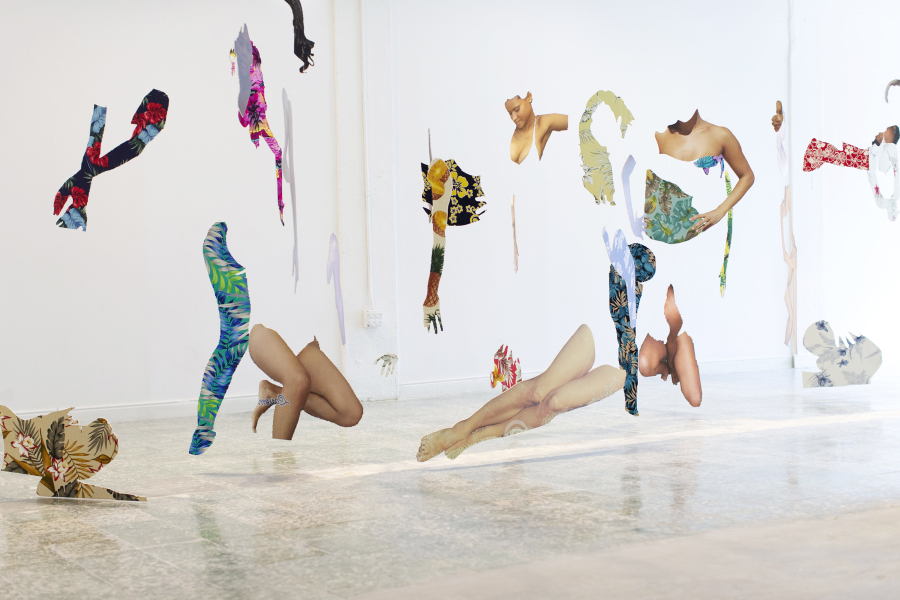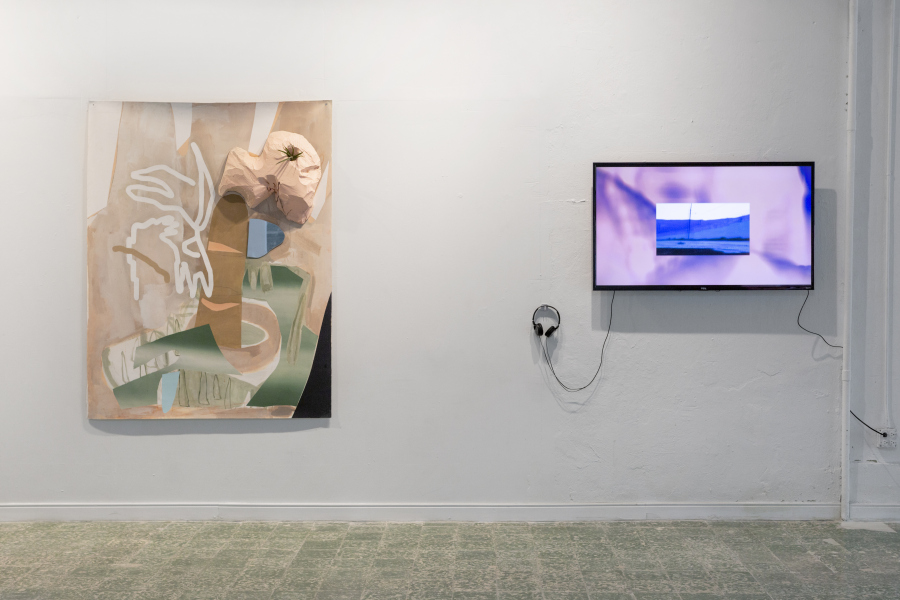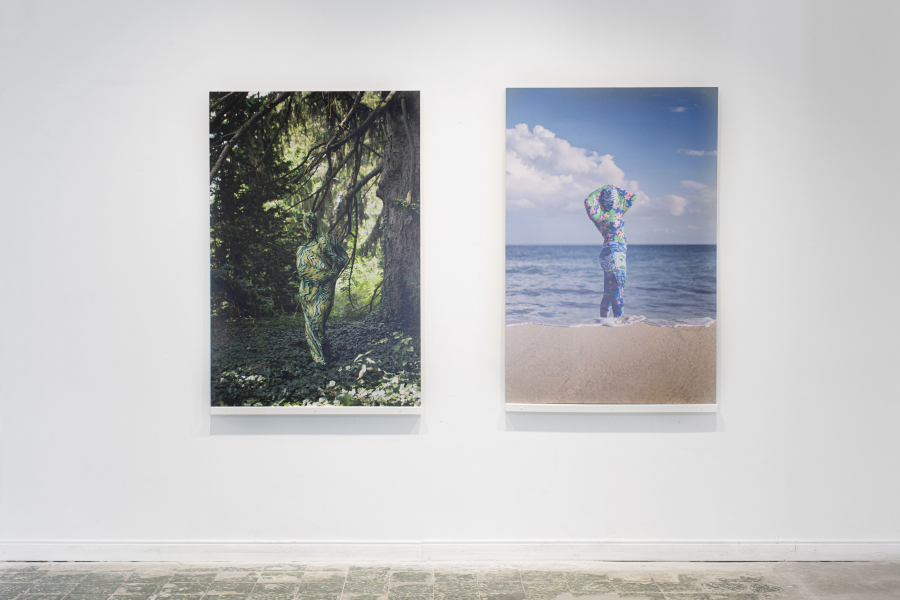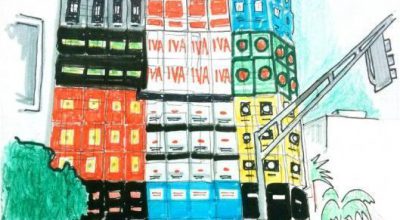
Resisting Paradise
By Marina Reyes Franco
“This may be obvious to some, but it is important to remember that the use of paradise is neither ambivalent nor static even when it fixes the region outside time and space; paradise is always on some level signifying colonial, sexualized, racialized, and gendered space/object/desire.” – Angelique V. Nixon, Resisting Paradise
In June 2018, “Discover Puerto Rico” was announced as the name of the island’s new destination marketing organization and overseer of its tourism “product” and national “brand.” After 82 years, Puerto Rico was embracing the same slogan that marketers used in the 1930s to promote the island, then under direct colonial rule by the United States. Since Puerto Rico became a possession of the United States in 1898, fantasies of exoticism, abundance, and misery have coexisted with the US need to justify intervention. The year 1937 marked a departure from previous approaches to poverty and underdevelopment in Puerto Rico that focused on the economic problems of the locals. It was then that Gov. Blanton Winship responded to Stateside backlash against his administration’s massacre of pro-independence civilians with a transformative advertising and propaganda campaign aimed at selling a pacified, glamourous island.1 Then, as in our debt-ridden, protest-heavy present, tourism was promoted by those in power as the only way up. Their messaging incorporated images of white-skinned, dark haired women as an embodiment of Puerto Rico’s role as exotic other under the United States flag; it equated products such as rum and coffee with the identity of the islands, and presented the convenience of modern travel to a tropical setting that happened to be far from WWII’s geography of conflict.2
These marketing strategies have shifted very little in the intervening decades. Then, like now, we were in the midst of an economic depression, yet there was also a revolt against the creation of a resort-centered identity and its accompanying depiction of the island’s inhabitants as humble servants. Early on, Puerto Ricans understood it as a neo colonial enterprise that would foster dependence on the United States. In her columns in La Democracia, journalist Ruby Black wrote about her contempt for Winship and compared him to author Sinclair Lewis’ fictional character George Babbitt: a man absorbed by “fishing, golf and tourism.” “Hunger, rum, death, blood,” she wrote, “Babbitt the tourist has us imprisoned in chains of trout, with walls of golf balls.”3 As the rumbles of independence spread through the region in the mid-20th century, the industry kicked into full gear, intertwining national identity with corporate branding. Nations throughout the Caribbean have befallen a similar fate in which the drive towards a version of development that is bent on accommodating foreigners becomes a historical trap, and what we prize about our islands is destroyed. Now they have to compete with each other for tourism dollars or defy interpretation.
Though geographically close, Caribbean artists are often unable to travel and show within the region. Intra-regional exchange is challenged by variations in language and colonial history, while flight routes prioritize the convenience of visitors coming from the United States or Europe, mirroring the migration patterns of many post colonial subjects. Resisting Paradise presents an opportunity to establish a much needed regional dialogue. The exhibition features works by Deborah Anzinger, Leasho Johnson and Joiri Minaya, showing how Caribbean artists are taking control of the narratives and images that convey ourselves to others. The artists, hailing from Jamaica and the Dominican Republic and its diasporas, work at the intersections of tourism, sexuality, gender, environmental concern, music, and the internet. Through their work, these artists reference shared histories of invasion, slavery, and economic exploitation of natural resources—forces which, in turn, translate into the commodification of Caribbean bodies in a Western imagining of paradisiacal tourist destinations. The show’s title draws inspiration from a book by Bahamian writer Angelique V. Nixon, which discusses the perils of living in a crafted, imagined paradise, and the powerful ways in which cultural workers resist and transform those given narratives.
The shared Caribbean experience of the plantation-to-resort economic development model makes evident the transition from slavery to a service economy under the visitor economy regime. This term is used to denote economic activity generated by people who visit a given place; it permeates all aspects of life, transforming a society to serve the tourist experience. Resisting Paradiseexplores what happens when tourism also applies to bodies—when sex and desire are also a currency. The projects of colonialism and empire have left an undeniable mark on Caribbean culture by shaping the way we relate to ourselves, each other, and to nature itself. In their work, these artists envision new paradigms of life in the region and its diaspora by challenging preconceived notions of what it means to be Caribbean: a colonial, racialized, sexualized subject.
Deborah Anzinger’s recent body of work aesthetically erodes understandings of land and bodies by using plants, styrofoam, mirrors and synthetic afro-kinky hair to explore the intersectionality between race, gender, sexuality, ecology and the environment. For Anzinger, the project of colonialism—the foundation of capitalism—has affected how people relate to each other and to the lands that they inhabit, and these inherited understandings must bereshaped. Her pictorial approach in Coyis characterized by the use of sensually suggestive shapes and evocations of landscapes in which various kinds of penetrations are happening. While some of her brush strokes resemble marks made by digital interventions, they are careful manual constructions revealing a worldview where the natural and artificial are equivalent. The mirrors she embeds in her paintings likewise offer a disruption of the subject/object binary by implicating the viewer in their reflection. Anzinger’s abstractions—in referencing nature and the artist’s own body—are a statement of their agency and potential. Her video The Distraction of Symbolismdelves deeper into her assertion of the plantation as the birthplace of our current economic regime—the place were both land and body were exploited—by placing her own pregnant self among images of rivers, plants and sinkholes, while a dialogue addresses the issue of water shortages and lack of access to natural resources.
Leasho Johnson’s monumental wall piece Death of the Sound Boydigitally integrates and modifies scenes from a series of 19th century tropical landscape paintings and etchings by artists such as J.B. Kidd, William Clarke, Richard Ansdell and Marcel Antoine Verdier, whose picturesque works about the conditions of life, labor, and nature in the Caribbean were meant to convey pro-colonial messages to Europeans. These artists depicted black identity through the lens of the oppressor, creating works that were often misinterpreted as factual verification of how things were in the past, serving to manifest, preserve, and promote racist perspectives of history. In his piece, Johnson digitally constructs an even more fantastical landscape by sampling fragments of the other artists’ work in a digital collage, and drops his avatar into the mix as a figure of carnal resistance. Sound boyin the work’s title refers to the Jamaican term for disc jockeys, which emerged within the country’s reggae/dancehall scene of the late 1970s. Johnson has long referenced dancehall music and its cultural influence in his work. In the context of this piece, the invocation of the sound boy—a figure that metaphorically kills his opponents in battle—addresses otherness, violence, and the normalization of death in relation to blackness. In the mural, the avatar—a cross between a Dunny Doll, a black face character, and the Venus of Willendorf—poses in daring, provocative ways that reclaim power over its own body and bring contemporary dancehall fearlessness into an otherwise oppressive scenario.
Joiri Minaya’s works explore the objectification and interchangeability of women’s bodies and landscape in visual culture, and patterns that provide camouflage and hypervisibility. Others make a link between the pictorial representation of brown and black women from tropical geographies, and the way their bodies are still represented in contemporaneity as a continuation of the same male, foreign gaze. Minaya often incorporates contemporary “tropical” prints within her work, which reference the scientific drawings used to classify and facilitate the study of the tropical colonial possessions. The video Siboneydocuments the arduous process of Minaya painting a detailed mural in a museum featuring a tropical pattern inspired by a found piece of fabric. Throughout the process, the artist’s own reflections on her actions appear as captions. The breathy, sensual version of the song Siboney, as performed by Connie Francis, plays as Minaya pours water over her white dress and rubs herself against the painting, undoing it.The installation #dominicanwomengooglesearchis the pixelated, printed result of searching for Dominican representation online. The work consists of several cut-out images of body parts, including some stylized with tropical-patterned fabrics, which are suspended from the ceiling. The fragments—many originating from websites where women offer their company to foreigners—lend themselves to individual study and make a point about the objectification of these bodies. When considered as a whole, however, the parts reconfigure themselves in strong, assertive stances that own the gaze that’s laid upon them. In Minaya’s photographs Container #2and #3, the artist poses in stereotypical fashion whilst wearing a full body suit printed with “tropical” designs that, in Glissantian fashion, renders her opaque to the viewer’s gaze.4 In Minaya’s work, the women look back and hold the power to refuse themselves to the viewer.
Looking into and reflecting upon our Caribbean selves can be like trying to see yourself in an infinity mirror: our reflections are ever smaller, each reflection adding length to the path the light must travel before exiting the mirror, receding into infinity. This warped reflected self is akin to our idealized version as subjects in paradise, bought and sold to us over and over from colonial times to the present; something to aspire to, to shape our behavior by. Seeing ourselves as how we think others perceive us and performing those identities back into the world can be a maddening experience. Learning the meaning of images in an increasingly mediated world is important; deconstructing the images that have informed how we present ourselves to the world is a political act.
RESISTING PARADISE
:Pública, 1057 Av. Ponce de León, San Juan, Puerto Rico
June 9th – July 6th, 2019
[1] The Ponce Massacre occurred on March 21, 1937 when police opened fire on a peaceful civilian march organized by the Puerto Rican Nationalist Party to commemorate the abolition of slavery and protest the incarceration of the party’s leader, Pedro Albizu Campos. A federal investigation found Gov. Winship guilty, but neither he nor anyone in the police force was charged. Townsley, “Puerto Rico and Winship,” Steve Hannagan, May 10, 2018, Accessed May 15, 2019 http://stevehannagan.com/2018/05/10/puerto-rico-and-winship/.
[2] Dr. Hilda Blanch, “La imagen de Puerto Rico 1928-1941” and “La propaganda de Puerto Rico en los Estados Unidos (1929-1941),” La voz del Centro, Jul. 22, 2018, Accessed May 15, 2019 http://www.vozdelcentro.org/tag/dra-hilda-blanch/.
[3] Dennis Merrill, Negotiating Paradise(Durham: University Of North Carolina Press, 2009), 183.
[4] Édouard Glissant (trans. Betsy Wing), Poetics Of Relation (Ann Arbor: Univ. Of Michigan Press, 1997), 189-194.
Resisting Paradise was selected through an Open Call by apexart, New York
También te puede interesar
JOIRI MINAYA: THE GREAT CAMOUFLAGE
In this exhibition, Minaya explores her relationship to changing landscapes as a migrant, a diasporic subject, all while grappling with the contested and intertwined colonial histories of the Caribbean and the Northeast United States.
CUANDO CAMBIA EL MUNDO. PREGUNTAS SOBRE ARTE Y FEMINISMOS
El feminismo reúne una matriz crítica que propone volver a pensar las formas en las que conocimos el mundo, instrumentos para entender la contemporaneidad, imaginarios para el futuro. Las obras de esta exposición fueron...








